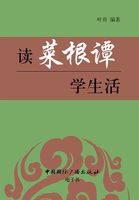24. For the fuller illustration of this point, I shall consider it in another light, and proceeding in finite quantities to the conclusion, I shall only then make use of one infinitesimal. Suppose the straight line MQ cuts the curve AT in the points R and S . Suppose LR a tangent at the point R , AN the abscissa, NR and OS ordinates. Let AN be produced to O , and RP be drawn parallel to NO .
Suppose AN = x , NR = y , NO = v , PS = z , the subsecant MN = s . Let the equation y = xx express the nature of the curve: and supposing y and x increased by their finite increments we get y + z = xx + 2xv + vv ; whence the former equation being subducted, there remains z = 2 xv + vv . And by reason of similar triangles wherein if for y and z we substitute their values, we get And supposing NO to be infinitely diminished, the subsecant NM will in that case coincide with the subtangent NL , and v as an infinitesimal may be rejected, whence it follows that which is the true value of the subtangent. And, since this was obtained by one only error, i.e. by once ejecting one only infinitesimal, it should seem, contrary to what hath been said, that an infinitesimal quantity or difference may be neglected or thrown away, and the conclusion nevertheless be accurately true, although there was no double mistake or rectifying of one error by another, as in the first case. But, if this point be thoroughly considered, we shall find there is even here a double mistake, and that one compensates or rectifies the other. For, in the first place, it was supposed that when NO is infinitely diminished or becomes an infinitesimal then the subsecant NM becomes equal to the subtangent NL . But this is a plain mistake; for it is evident that as a secant cannot be a tangent, so a subsecant cannot be a subtangent.
Be the difference ever so small, yet still there is a difference. And, if NO be infinitely small, there will even then be an infinitely small difference between NM and NL . Therefore NM or s was too little for your supposition (when you supposed it equal to NL ); and this error was compensated by a second error in throwing out v , which last error made s bigger than its true value, and in lieu thereof gave the value of the subtangent. This is the true state of the case, however it may be disguised. And to this in reality it amounts, and is at bottom the same thing, if we should pretend to find the subtangent by having first found, from the equation of the curve and similar triangles, a general expression for all subsecants, and then reducing the subtangent under this general rule, by considering it as the subsecant when v vanishes or becomes nothing.
25. Upon the whole I observe, First, that v can never be nothing, so long as there is a secant. Secondly, that the same line cannot be both tangent and secant. Thirdly, that when v and NO [See the foregoing figure] vanisheth, PS and SR do also vanish, and with them the proportionality of the similar triangles.
Consequently the whole expression, which was obtained by means thereof and grounded thereupon, vanisheth when v vanisheth. Fourthly, that the method for finding secants or the expression of secants, be it ever so general, cannot in common sense extend any farther than to all secants whatsoever: and, as it necessarily supposed similar triangles, it cannot be supposed to take place where there are not similar triangles. Fifthly, that the subsecant will always be less than the subtangent, and can never coincide with it; which coincidence to suppose would be absurd; for it would be supposing the same line at the same time to cut and not to cut another given line; which is a manifest contradiction, such as subverts the hypothesis and gives a demonstration of its falsehood. Sixthly, if this be not admitted, I demand a reason why any other apagogical demonstration, or demonstration ad absurdum should be admitted in geometry rather than this: or that some real difference be assigned between this and others as such. Seventhly, I observe that it is sophistical to suppose NO or RP , PS , and SR to be finite real lines in order to form the triangle, RPS , in order to obtain proportions by similar triangles; and afterwards to suppose there are no such lines, nor consequently similar triangles, and nevertheless to retain the consequence of the first supposition, after such supposition hath been destroyed by a contrary one.
Eighthly, that although, in the present case, by inconsistent suppositions truth may be obtained, yet such truth is not demonstrated: that such method is not conformable to the rules of logic and right reason: that, however useful it may be, it must be considered only as a presumption, as a knack, an art, rather an artifice, but not a scientific demonstration.
26. The doctrine premised may be further illustrated by the following simple and easy case, wherein I shall proceed by evanescent increments. Suppose AB = x , BC = y , BD = o , and that xx is equal to the area ABC : it is proposed to find the ordinate y or BC . When x by flowing becomes x + o , then xx becomes xx + 2 xo + oo :
and the area ABC becomes ADH , and the increment of xx will be equal to BDHC , the increment of the area, i.e. to BCFD + CFH . And if we suppose the curvilinear space CFH to be qoo , then 2 xo + oo = yo = qoo , which divided by o give 2 x + o = y + qo .
And, supposing o to vanish, 2 x = y , in which case ACH will be a straight line, and the areas ABC , CFH triangles. Now with regard to this reasoning, it hath been already remarked, [Sect. 12 and 13 supra .] that it is not legitimate or logical to suppose o to vanish, i.e. to be nothing, i.e. that there is no increment, unless we reject at the same time with the increment itself every consequence of such increment, i.e. whatsoever could not be obtained by supposing such increment. It must nevertheless be acknowledged that the problem is rightly solved, and the conclusion true, to which we are led by this method. It will therefore be asked, how comes it to pass that the throwing out o is attended with no error in the conclusion?















